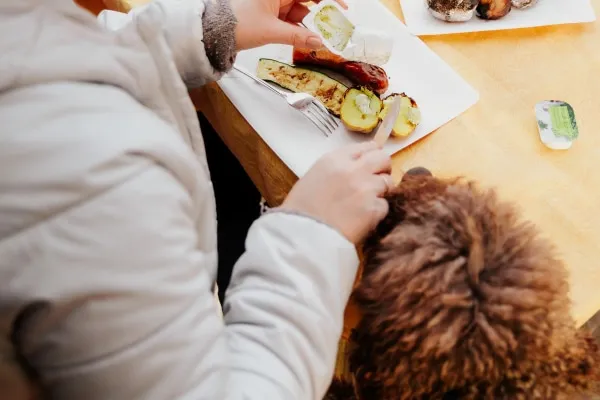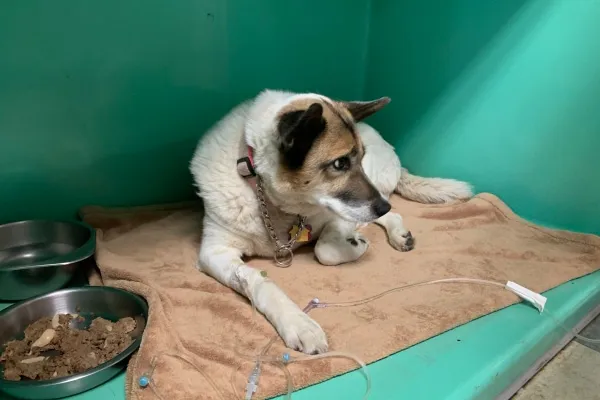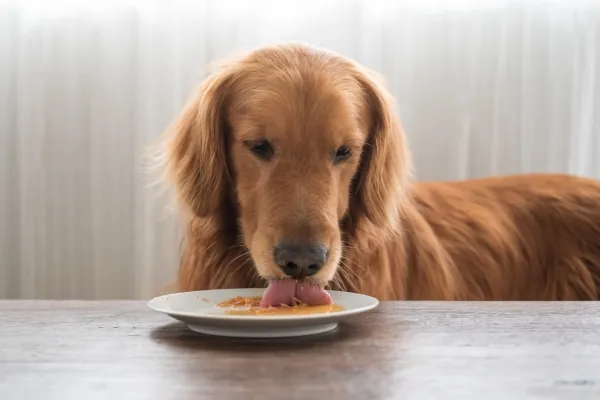As a dedicated dog parent, few experiences are more distressing than witnessing your beloved canine companion suffer from a sudden, severe illness. Pancreatitis in dogs, characterized by horrific vomiting, diarrhea, and excruciating abdominal pain, can turn a vibrant pet into a very sick dog in mere moments. While managing medications and understanding the condition can be daunting, a crucial aspect of your dog’s recovery and long-term well-being is determining the best diet. This can feel overwhelming with the myriad of information available, but understanding the right nutritional approach is key to supporting your dog’s healing journey.
This comprehensive guide, based on veterinary insights, aims to demystify the dietary needs of dogs with pancreatitis. We’ll explore the underlying mechanics of this condition, what causes it, and, most importantly, provide clear, actionable advice on what can I feed my dog with pancreatitis to aid in their recovery and prevent future flare-ups.
Understanding Pancreatitis in Dogs
To grasp why specific dietary changes are essential, it’s helpful to understand the pancreas’s role and what goes awry during pancreatitis.
What Does the Pancreas Do?
The pancreas, a vital organ nestled beneath the stomach and near the small intestine, performs two primary functions. One of its main jobs involves releasing digestive enzymes into the upper part of the small intestine, called the duodenum. These enzymes are usually stored in an inactive form (zymogens), protected by enzyme inhibitors within the pancreas. Only when they reach the duodenum and interact with its mucosal cells do they activate, beginning the breakdown of carbohydrates, fats, and proteins in food. The pancreas also produces hormones like insulin, crucial for blood sugar regulation.
What is Pancreatitis?
Pancreatitis is an inflammation of the pancreas where, tragically, the enzyme inhibitors fail. This malfunction causes the zymogens to activate prematurely while still inside the pancreas. This internal activation triggers a cascade of events that compromise pancreatic membranes and blood vessels, leading to bleeding and the leakage of activated enzymes into the abdominal cavity. In essence, the pancreas begins to digest itself and, sometimes, surrounding organs, leading to significant pain and systemic distress.
What Causes Pancreatitis?
Pancreatitis doesn’t usually have a single cause but rather results from a combination of risk factors and triggers. These can include:
- Underlying Health Conditions: Endocrine disorders such as diabetes mellitus, Cushing’s disease in dogs, and hypothyroidism in dogs can predispose dogs to pancreatitis.
- Weight Issues: Being overweight or obese significantly increases the risk. If you’re wondering is my dog overweight, consider assessing their body condition score.
- Dietary Factors: Eating new foods, high-fat diets, table scraps, or fatty treats are common culprits for triggering acute episodes.
- High Triglycerides: Elevated fat levels in the blood can contribute to pancreatic inflammation.
- Gastrointestinal Disease History: Previous digestive issues can increase susceptibility.
- Toxins and Parasites: Exposure to certain harmful substances.
- Medications: Some drugs, like azathioprine, bromide, diuretics, and phenobarbital, are associated with an increased risk.
 Poodle mix begging for owner, emphasizing the risk of table scrapsBe cautious when feeding your dog table scraps, as rich or fatty foods are a common trigger for pancreatitis.
Poodle mix begging for owner, emphasizing the risk of table scrapsBe cautious when feeding your dog table scraps, as rich or fatty foods are a common trigger for pancreatitis.
What Are the Types of Pancreatitis?
Pancreatic inflammation can manifest as either acute or chronic. Acute pancreatitis involves a sudden, rapid onset of severe clinical signs. Chronic pancreatitis, on the other hand, occurs when acute episodes don’t fully resolve or reoccur over time. While acute cases tend to present with more severe symptoms, differentiating between the two solely based on initial symptoms can be challenging for veterinarians.
Symptoms, Diagnosis, and Treatment
The most common symptoms of pancreatitis in dogs are vomiting (occurring in about 90% of cases) and significant abdominal pain (present in 58%). Other possible signs include diarrhea, dehydration, and lethargy. A dog with pancreatitis may also lose interest in food and appear noticeably unwell. Given that pancreatitis can be life-threatening, if your dog exhibits these symptoms, an emergency vet visit is imperative.
Diagnosis typically involves a thorough physical examination, bloodwork (which may show elevated white blood cells, liver, or kidney values), and a canine pancreatic lipase immunoreactivity (cPLI) test to confirm pancreatic inflammation. An abdominal ultrasound may also be recommended.
Unfortunately, there’s no specific cure for pancreatitis. Treatment focuses on supportive care to alleviate symptoms and stabilize the dog. This often includes pain management, anti-nausea medications, fluid therapy (subcutaneous or intravenous fluids to prevent hypovolemic shock), and addressing any concurrent illnesses like diabetes. Crucially, a significant part of the treatment involves a dietary change to support the digestive system and prevent future episodes.
 Dog with pancreatitis getting IV fluids in the hospitalPancreatitis can be severe, often requiring hospitalization for intensive care, including intravenous fluids to combat dehydration and maintain stability.
Dog with pancreatitis getting IV fluids in the hospitalPancreatitis can be severe, often requiring hospitalization for intensive care, including intravenous fluids to combat dehydration and maintain stability.
What Can I Feed My Dog With Pancreatitis?
The question of what to feed a dog recovering from pancreatitis has been a long-standing subject of veterinary debate, often causing stress for concerned pet parents. Understanding the best dietary approach is paramount for recovery.
How Often Should You Feed a Dog With Pancreatitis?
Historically, veterinarians often recommended fasting dogs with pancreatitis for a day or two to “rest the pancreas,” as eating stimulates enzyme release. However, recent research suggests that withholding food can increase the risk of complications, including loss of digestive tract motility, decreased blood flow to the intestines, and dangerously low protein levels in the blood.
Consequently, many veterinarians now adopt a middle-ground approach: feeding small, frequent meals from the outset. This strategy helps maintain intestinal tract health and minimizes problems if the dog vomits. Some dogs may eat on their own, while others might require syringe feeding or even a feeding tube. If your dog with pancreatitis won’t eat, your vet might consider appetite stimulants for dogs or a food change.
What is the Best Food to Feed a Dog With Pancreatitis?
A quick online search for “what can I feed my dog with pancreatitis” will yield countless opinions, highlighting that there isn’t a single “one-size-fits-all” diet. However, veterinary experts generally agree on one core principle: diets for pancreatitis patients should be low in fat and highly digestible.
Dog Food Label Reading 101
To identify appropriate low-fat, highly digestible diets, you must become adept at reading dog food labels. Commercial dog foods feature a “guaranteed analysis” on their packaging, similar to human nutrition labels but with different criteria. When evaluating fat content, look for “crude fat” and its percentage. This is often listed on an “as fed” basis (the food’s actual weight) or a “dry matter basis” (the weight if all moisture were removed).
For accurate comparison, always compare fat content on a dry matter basis. Canned foods, being 75-78% moisture, will show a much lower “as fed” fat percentage than dry foods (typically 10-12% moisture), even if their dry matter fat content is identical. For simplicity, the fat contents discussed here are converted to a dry matter basis. You can learn how to perform this conversion yourself by consulting resources like the FDA’s pet food label page, which also offers extensive information on label reading.
Recommended Fat Content for Pancreatitis Dogs
Veterinarians typically recommend diets with a low to moderate fat content for dogs with pancreatitis. A “low” fat content generally means 8% crude fat or less on a dry matter basis, while “moderate” fat content can go up to 15%. Your vet will help determine the appropriate range for your dog’s specific condition.
Low-Fat Veterinary Prescription Diets
Leading pet nutrition companies like Royal Canin, Hill’s Science Diet, and Purina employ board-certified veterinary nutritionists and invest in extensive research to formulate specialized diets. These specialists undergo years of advanced training, making them uniquely qualified to create high-quality, therapeutic foods.
For dogs with pancreatitis, these companies offer prescription diets specifically designed to be low in fat and highly digestible. Some excellent examples include:
- Purina Pro Plan Veterinary Diets EN Gastroenteric Low Fat Canine Formula: Approximately 6.8% crude fat (dry matter basis).
- Hill’s Prescription Diet Digestive Care i/d Low Fat Dry Dog Food: Approximately 7.5% crude fat (dry matter basis).
- Royal Canin Veterinary Diet Gastrointestinal Low Fat Dry Dog Food: Approximately 7.1% crude fat (dry matter basis).
These three diets generally have the lowest fat content among available prescription options. In some cases, a vet might recommend a diet with a more moderate fat content, such as Purina Pro Plan’s HA or Royal Canin’s Selected Protein diets, especially for dogs with food allergies. Specific health conditions, like when a dog has kidney disease in dogs alongside pancreatitis, may necessitate a different dietary recommendation tailored by your veterinarian.
 Dog eating a prescription dog food for pancreatitis, emphasizing vet guidelinesIt is crucial to adhere strictly to your veterinarian’s guidelines when selecting and feeding your dog after a pancreatitis diagnosis.
Dog eating a prescription dog food for pancreatitis, emphasizing vet guidelinesIt is crucial to adhere strictly to your veterinarian’s guidelines when selecting and feeding your dog after a pancreatitis diagnosis.
Moderate-Fat Over-the-Counter Diets for Dogs
For some dog parents, prescription diets might be cost-prohibitive, or availability issues might arise. In cases of mild pancreatitis, certain over-the-counter diets with moderate fat content may be acceptable alternatives. Examples include:
- Purina Pro Plan Adult Weight Management Large Breed Chicken and Rice
- Hill’s Science Diet Adult Perfect Weight Small & Mini Dog Food
- Royal Canin Small Indoor Adult Dry Dog Food
However, it is paramount to consult your veterinarian before substituting a prescription diet with an over-the-counter option. These diets are not suitable for all dogs, and your vet might still recommend a low-fat prescription diet or a specially formulated homecooked meal instead.
Homecooked Low-Fat Diets
Some owners prefer to prepare low-fat homecooked meals for their dogs, perhaps due to allergies to commercial food ingredients, unavailability of suitable commercial options, or a personal preference. While I advocate for homecooked diets, it’s vital to caution against simply feeding a couple of ingredients like skinless chicken and sweet potatoes. Such unbalanced meals can severely deprive dogs of essential nutrients.
Therefore, any homecooked diet should be based on recipes created by board-certified veterinary nutritionists. These specialists can provide precise blends and amounts of ingredients to ensure a complete and balanced diet tailored to your dog’s specific health needs. Resources like ACVN.org can help you find veterinary nutritionists in your area, and websites like BalanceIT.com offer balanced recipes. The OSU Nutrition Support Service website also provides valuable information.
Pre-Made Homecooked Low-Fat Diets
Preparing homecooked meals properly requires significant time and expertise. Fortunately, pre-made low-fat homecooked diets are available from companies like Nom Nom and Just Food for Dogs. These companies employ veterinary nutritionists to formulate their diets, offering confidence in their nutritional completeness. Nevertheless, always consult your veterinarian or one of the company’s veterinary consultants before purchasing to ensure the meal’s fat content is appropriate for your dog’s condition.
How Long Should My Dog Stay on This Diet?
Once you’ve chosen an appropriate low-fat dog food, the next question is how long your dog should remain on it. The duration varies greatly depending on individual circumstances. A dog who has fully recovered from an acute pancreatitis episode might be able to safely transition back to their original food after a week or two, provided the original diet has a moderate fat content.
However, if your dog has recurring pancreatitis, multiple risk factors, or chronic pancreatitis, your veterinarian may recommend staying on a low-fat, highly digestible diet long-term. This strategy is crucial for reducing the risk of relapse and maintaining pancreatic health. Always follow your vet’s specific recommendations for your dog’s unique situation.
What Not to Feed a Dog With Pancreatitis?
Just as important as knowing what to feed your dog is understanding what to avoid. Since fatty foods and table scraps are known triggers for pancreatitis, they must be strictly avoided, especially for dogs with a history of the condition. Items like bacon, ham, grease, and cooking oils are particularly problematic due to their high-fat content. Even seemingly healthy options like coconut oil, despite its other benefits, is still an oil and should generally be avoided in dogs prone to pancreatitis. To learn more about harmful foods, you can read our article on what foods dogs can’t eat.
 Golden Retriever cleaning up dishes, highlighting preventionEnsure all dishes and snacks are cleaned up promptly after meals to significantly reduce the chance of your dog consuming fatty foods that could trigger pancreatitis.
Golden Retriever cleaning up dishes, highlighting preventionEnsure all dishes and snacks are cleaned up promptly after meals to significantly reduce the chance of your dog consuming fatty foods that could trigger pancreatitis.
Feel Confident in Feeding Your Dog With Pancreatitis
Navigating the dietary needs of a sick dog can feel overwhelming, especially with so many choices and factors to consider. However, remember that you have valuable resources at your disposal. Your veterinarian is your primary partner and can provide personalized advice and guidance. Don’t hesitate to ask them questions or seek their input on any food you’re considering. Additionally, you can contact pet food manufacturers directly to inquire about the average fat content of their products on a dry matter basis.
It’s okay to start somewhere and adjust as needed. If a particular food doesn’t agree with your dog or they simply don’t like it, you can always work with your vet to switch to another option. By staying in close communication with your veterinary team and keeping these guidelines in mind, you can feel confident in making the best dietary choices for your dog. Every carefully chosen meal brings your beloved companion one paw closer to recovery and a healthier, happier life.
